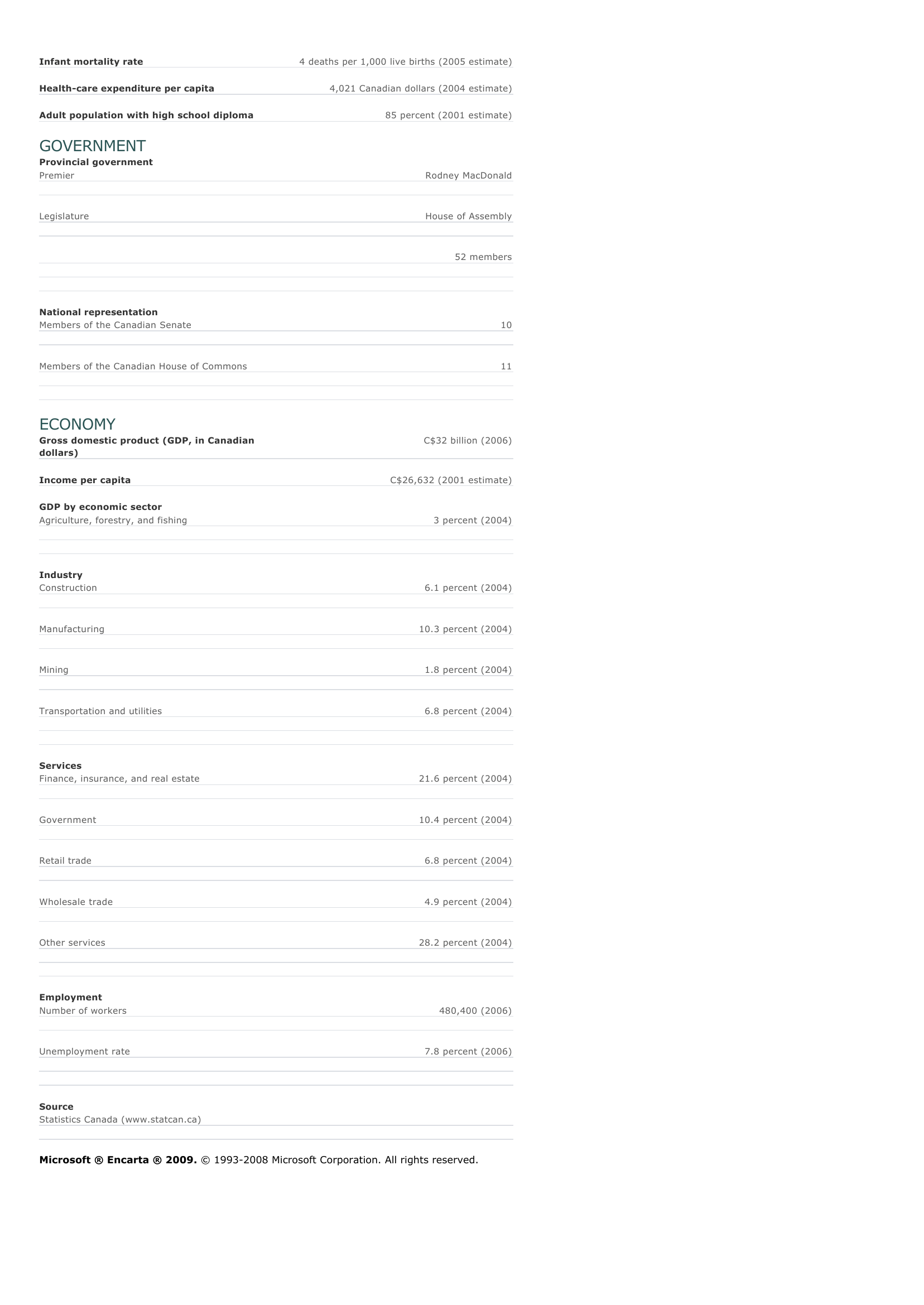Nova Scotia - Facts and Figures.
Publié le 10/05/2013

Extrait du document
«
Infant mortality rate 4 deaths per 1,000 live births (2005 estimate) Health-care expenditure per capita 4,021 Canadian dollars (2004 estimate) Adult population with high school diploma 85 percent (2001 estimate) GOVERNMENTProvincial governmentPremier Rodney MacDonald Legislature House of Assembly 52 members National representationMembers of the Canadian Senate 10 Members of the Canadian House of Commons 11 ECONOMYGross domestic product (GDP, in Canadiandollars) C$32 billion (2006)
Income per capita C$26,632 (2001 estimate) GDP by economic sectorAgriculture, forestry, and fishing 3 percent (2004) IndustryConstruction 6.1 percent (2004) Manufacturing 10.3 percent (2004) Mining 1.8 percent (2004) Transportation and utilities 6.8 percent (2004) ServicesFinance, insurance, and real estate 21.6 percent (2004) Government 10.4 percent (2004) Retail trade 6.8 percent (2004) Wholesale trade 4.9 percent (2004) Other services 28.2 percent (2004) EmploymentNumber of workers 480,400 (2006) Unemployment rate 7.8 percent (2006) SourceStatistics Canada (www.statcan.ca) Microsoft ® Encarta ® 2009. © 1993-2008 Microsoft Corporation.
All rights reserved..
»
↓↓↓ APERÇU DU DOCUMENT ↓↓↓
Liens utiles
- Wyoming - Facts and Figures.
- Wisconsin - Facts and Figures.
- Washington - Facts and Figures.
- West Virginia - Facts and Figures.
- Alberta - Facts and Figures.


